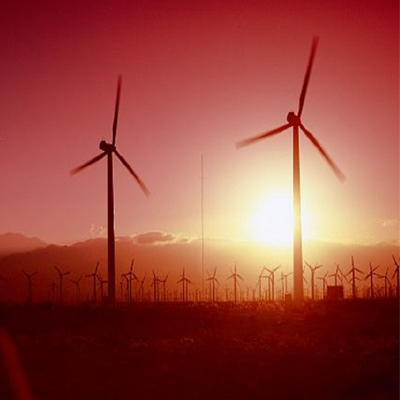Gas turbines are extensively used within power generation for base load, mid-merit and standby power. They provide fast response, flexible operation and low environmental impact. The installation time is relatively short.
The increasing use of wind power presents a challenge for base load combined cycle gas turbine plants. It requires a better understanding of 'predictable availability', life usage and new opportunities for mid-merit plant. The recent large fall in gas prices creates new opportunities but will also require enhanced understanding of more variable resulting gas composition and implications on its use. In the longer term, pressures to reduce carbon dioxide will re-emerge. There is an increasing need to consider integrated and novel cycles.
Areas of current research include:-
Gas Turbine Operability and Availability - keeping industrial installations in working order to maximise performance and economic returns.
-
Utilisation - selection for a range of applications and future fuels such as synthesis gas, hydrogen and novel cycles.
-
Gas Turbines Prognostics - predicting useful life expectancy of machinery and condition monitoring.
-
Asset Management - condition and life assessments of energy assets used in power generation and equipment selection.
Our key long-standing activities benefit and enhance the relationships with gas turbine users in a wide range of applications. Our international client base includes companies such as:
-
OEMs - Rolls-Royce, Alstom, GE, Rolls-Royce, Siemens.
-
Users - BP, Shell, Total, EON, Petrobras, Manx Electricity.
-
Suppliers - RM-C, Wood Group GTS.
-
Partnerships include the European Union and other universities.
-
We also work with organisations such ETN (European Turbine Network) and ASME (American Society of Mechanical Engineers).
Our impact
We are leading the delivery and use of the TERA (Technoeconomic Environmental Risk Analysis) for the evaluation of advanced engine concepts designed to meet challenging environmental goals. The origins of the TERA date to more than a decade of work on novel cycles for power generation and propulsion systems for civil aircraft focusing on the environment.
The core of TERA is a detailed thermodynamic model of the power plant. This delivers a representative view of component and whole engine performance in a wide range of operating conditions. Surrounding this core there is a layer of additional models, relating to specific application, economic, emissions, noise, weight, etc.
Risk analysis is then carried out at two levels. Firstly financial risk is examined through variability of income, costs and prices. The second level of risk examined is from the perspective of the technologies employed.
The outcome is an economic and environmental picture of power plant performance that takes into account variable demand patterns. The results are very useful for comparisons, assessment of life cycle costs and investment appraisals for radically different power and propulsion systems.
The methodology provides a valuable insight when investigating the most promising systems in terms of multi-disciplinary criteria. This includes estimating their competitiveness, so as to facilitate their route to commercial operation with benefits for the UK and global energy industry and for the long term needs of the community.
About our research
Our greatest strength is the ability to combine the academic rigour and long-term perspective of a university with the commercial and business focus of industry.
Our excellence in strategic and applied research has enabled us to make significant contributions to the world around us for over 60 years. We address real life challenges and focus on research that is of strategic and practical importance.
We provide a supportive research community for students and our academic work is regularly published in journal article, book or thesis form.
Our facilities
We have a number of large-scale Gas Turbine Engineering Laboratories, unique within the university sector and based on campus. These are ideal for testing many aspects of turbomachinery. Equipment in the laboratories include a 2MW compressed air plant as well as a unique regenerative air heater giving it the capacity of providing clean air at high pressure, temperature and flow.
A number of high speed drives trains are available with various output speeds up to 40,000 rpm at 850kW. A low speed facility provides large scale compressor rigs for instrumentation development with an 8 inch diameter transonic suction tunnel for instrument calibration.
Our facilities are supported by skilled and experienced staff able to conceive, develop, design, commission, operate and analyse test facilities, measurement techniques and their results. This expertise and capability can be deployed for a wide range of technology investigations focusing on economic and environment benefits.
Find out more about our world-class facilities
Working with us
We work closely with our partners to understand their expectations and business drivers. Many members of our academic and research teams have previous senior level industrial experience so we are able to provide solutions that can be easily implemented in practice.
We have experience in collaborating with partners both nationally and internationally for research. We are able to undertake projects on both short and long-term timescales. Projects might involve gas turbine and combined cycle design analysis of conventional and new power generation cycles. “TERA” (Techno economic, environment and risk assessments) is a concept pioneered at Cranfield which we are delivering to help our clients meet their environmental goals.
We have been involved in complex experimental-analytical programmes focusing on renewable energy systems, improved turbomachinery for the energy industry and tri-generation (power, heat and cold) analysis.
With two intakes annually, our Thermal Power and Propulsion MSc gives us access to a large postgraduate student community to undertake sponsored student projects or attract PhD level researchers.
